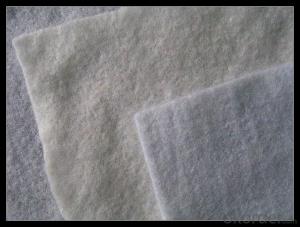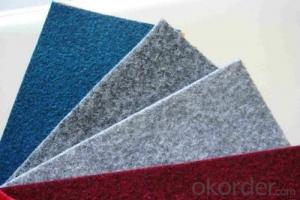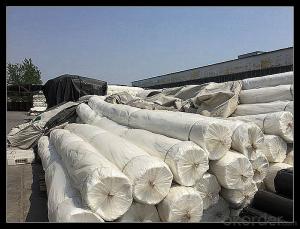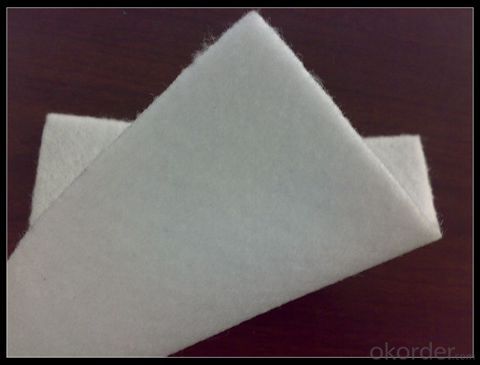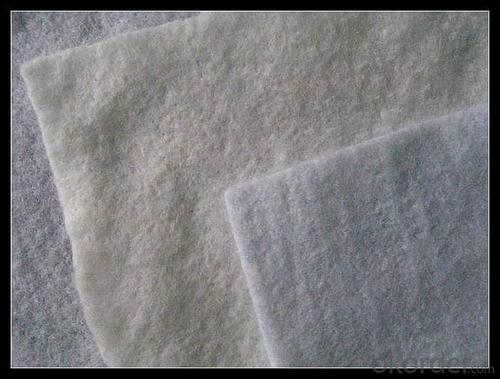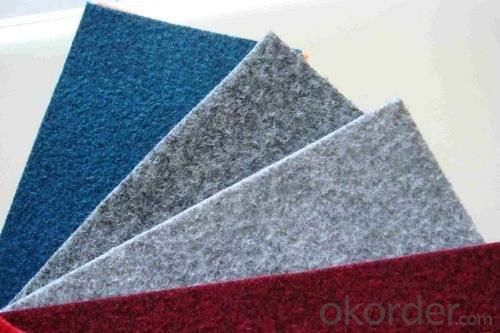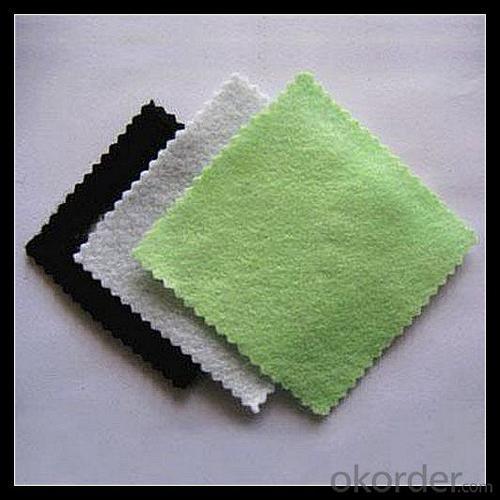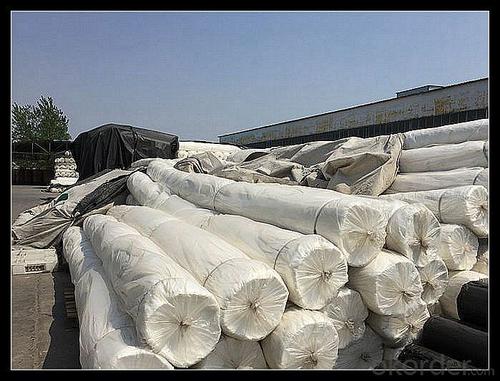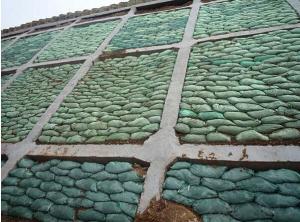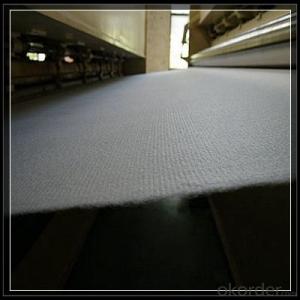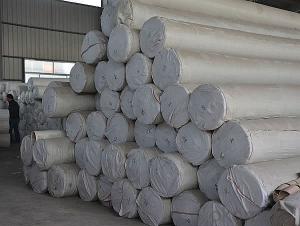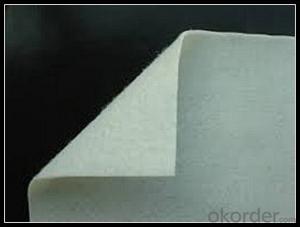Cirtex Polypropylene Nonwoven Geotextile Fabric Composites with High Strength Materials for Stabilization
- Loading Port:
- China main port
- Payment Terms:
- TT OR LC
- Min Order Qty:
- 1000 g/m²
- Supply Capability:
- 1000000 g/m²/month
OKorder Service Pledge
OKorder Financial Service
You Might Also Like
Specification
We offer a wide range of Non Woven Geotextile and Felt Fabrics. Non Woven Geotextile
fabrics have their project, structure, or system based on various geo technical materials
such as soils, rock, earth etc. Non Woven Geotextile fabrics are either used to restrict
or allow passage of Water, as desired. Non Woven Geotextile fabrics are also known as
civil engineering fabrics, erosion control cloth, filter fabrics and support membranes.
Some of the Geotextile Fabrics we carry are:
Pond Liners
Landfill Liners
Needle punched Non-wovens
Woven Monofilament Fabrics
Soil Stabilization, Reinforcement and Separation products
Non-woven Spun-bonded Landscape Fabrics
Ground Cover Fabric
Inlet Protection Fabric (DOT Spec)
Fuzz-back Fabric

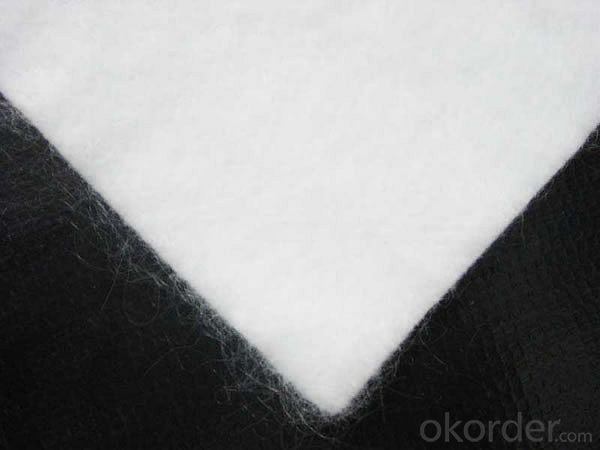
Quality assurance
1.On a regular basis or as per your request,we entrust national testing agencies to conduct quality inspections
2. Strictly in accordance with the ISO9001-2008 international quality system standard,we monitor and manage the whole process throughout production,quality testing,and measurement to ensure product quality
3. For quality-related construction delay or substandard construction(except for damage or losses due to customer’s responsibility or irresistible natural disasters),we have refunding,replacement,and repair services.We will respond to customers’ feedbacks on quality issues within 24 hours.
After-sales service
1.In order to provide customers with comprehensive technical support,we will provide technical and other related information upon request in a timely manner.
2.In required,we will appoint specialized technicians to the construction site to give technical trainings to construction people,and offer technical guidance throughout the whole construction process.
3.For damage due to shipment and delivery,after we receive the complaint,we will check the issure through provided pictures and videos.If our responsibility is confirmed,we wil offer free replacement.
4.When the construction is completed,as your request,our technical staff may participate in the final acceptance.
FAQ:
Q: What kind of payments does jenor support?
A: T/T, L/C, Cash are accepted.
Q: Do you charge for the samples?
A: Accordeing to our company policy, the samples are free, we only charge the freight fee. And we will return the freight fee during the next order.
Q: Can you produce according to customers' design?
A: Sure, we are professional manufacturer, OEM and ODM are both welcome.
Q: Do you have other products?
A: Yes, please check the pictures:
- Q: Can geotextiles be used in athletic field construction?
- Yes, geotextiles can be used in athletic field construction. They are commonly used in the construction of athletic fields as they provide various benefits such as soil stabilization, drainage improvement, and weed control. Geotextiles help to prevent the mixing of different soil layers, reduce soil erosion, and enhance the overall durability and longevity of the field.
- Q: How do geotextiles aid in the reduction of pore water pressure?
- Geotextiles aid in the reduction of pore water pressure by providing a barrier that allows water to flow through while preventing the movement of fine soil particles. This helps to maintain the stability of soil structures, as the geotextile acts as a filter, allowing excess water to drain away and reducing the build-up of pressure within the soil.
- Q: Can geotextiles be used in green space development projects?
- Yes, geotextiles can be used in green space development projects. Geotextiles are versatile materials that can be used as a barrier or separator to prevent soil erosion, support vegetation growth, and improve drainage in green space areas. They can be utilized in various applications such as stabilizing slopes, reinforcing embankments, and promoting the establishment of healthy vegetation.
- Q: How do geotextiles help with stabilization of railway tracks?
- Geotextiles aid in the stabilization of railway tracks by providing additional support, preventing the displacement of ballast, and reducing the risk of track deformations caused by settlement or erosion.
- Q: What are the geotextiles for concrete health
- Concrete health with the geotextile, I probably understand what you mean is planted in the above plant flowers and the like, it can be used Daxiang non-woven geotextile can, and hope to help you!
- Q: What are the considerations for geotextile selection in shoreline erosion control?
- When selecting geotextiles for shoreline erosion control, several considerations need to be taken into account. These include the type of shoreline, the severity of erosion, the desired lifespan of the solution, the presence of waves or currents, the sediment type, and the environmental conditions. Factors such as geotextile strength, permeability, durability, and resistance to UV degradation and chemical exposure should also be considered to ensure an effective and long-lasting solution for shoreline erosion control.
- Q: Geotextile price is how much money
- Ask the geotextile price is too general, because the standard too much. Short wire, filament, polyester; non-standard, GB and so on. To Hongxiang Li Qian short wire geotextile price quote, for example, the price is generally between 4900-7500 yuan / ton, but the weight <200g, an increase of 100 yuan / ton; weight> 800g, an increase of 500 yuan /Ton. 187 & lt; 6600 & lt; 5604
- Q: What is the price of composite geotextile?
- Geotextile is divided into polyester short geotextile, staple acupuncture geotextile, polyester filament geotextile, woven geotextile, filament woven geotextile, and so on. Specifications and different models, the price is also different, composite geotextile weight in the 80-1500g / ㎡ between the quality standards are divided into non-standard, whitening A, Sinochem, the general national standard and so on. The t value is generally between 4900 and 7500 yuan / ton, 187 & lt; 6600 & lt; 5604
- Q: How do geotextiles improve the performance of embankments?
- Geotextiles improve the performance of embankments by providing reinforcement and stability to the soil structure. They act as a barrier against soil erosion, preventing the loss of soil particles and maintaining the integrity of the embankment. Geotextiles also allow water to pass through while retaining the soil, enhancing drainage and preventing water buildup that could weaken the embankment. Additionally, geotextiles distribute the load more evenly, reducing the potential for settling and improving overall stability of the embankment.
- Q: Can geotextiles be used in waste containment projects?
- Yes, geotextiles can be used in waste containment projects. They are commonly used to provide separation, filtration, and reinforcement in landfill liners, caps, and other waste containment systems. Geotextiles help to prevent the migration of contaminants, improve drainage, and enhance the overall stability and performance of waste containment structures.
Send your message to us
Cirtex Polypropylene Nonwoven Geotextile Fabric Composites with High Strength Materials for Stabilization
- Loading Port:
- China main port
- Payment Terms:
- TT OR LC
- Min Order Qty:
- 1000 g/m²
- Supply Capability:
- 1000000 g/m²/month
OKorder Service Pledge
OKorder Financial Service
Similar products
Hot products
Hot Searches
Related keywords


